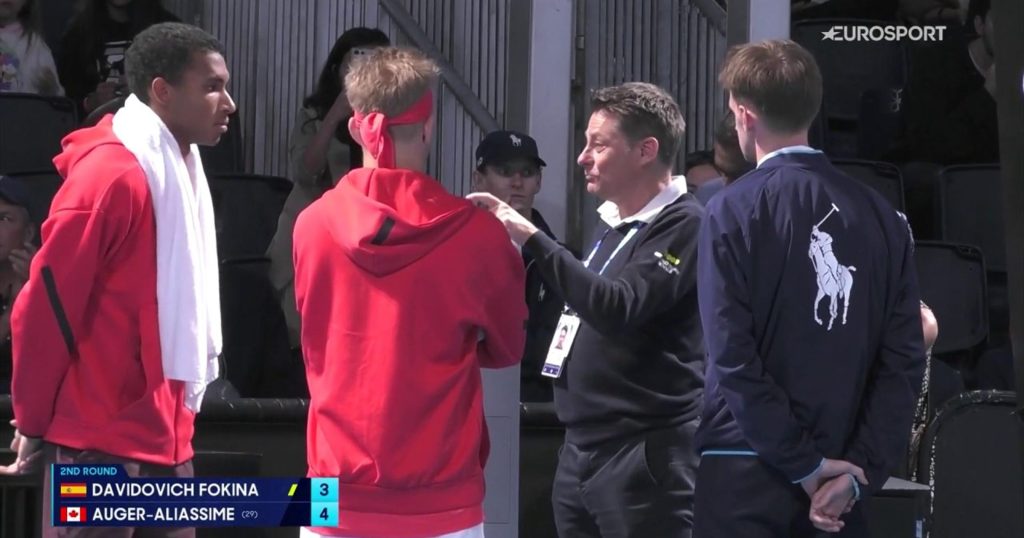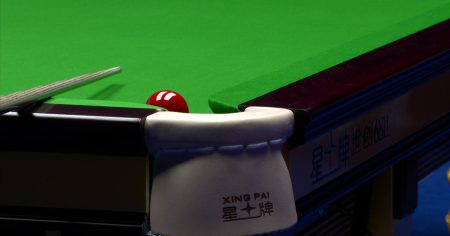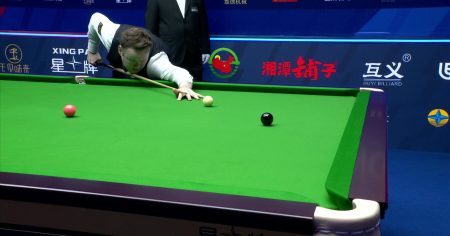The Australian Open, renowned for its vibrant atmosphere and intense competition, occasionally witnesses unusual interruptions that add a touch of the unexpected to the tournament’s narrative. One such instance unfolded during a first-round men’s singles match between rising star Felix Auger-Aliassime and the spirited Alejandro Davidovich Fokina. Unexpectedly, the clash of rackets and the roar of the crowd were punctuated by an increasingly intrusive din emanating from a nearby court, forcing a temporary suspension and ultimately a relocation of the match. This peculiar disruption underscored the unique challenges presented by the tournament’s bustling environment, highlighting the delicate balance between maintaining the energy of the event and ensuring fair play for all competitors.
The match, which promised to be a thrilling contest between two talented players, began inauspiciously under the lights of Court 15. Auger-Aliassime, the sixth seed and a player touted as a future Grand Slam champion, was expected to overcome the challenge posed by Davidovich Fokina, a Spanish player known for his unpredictable shot-making and tenacious court coverage. As the two players engaged in their early exchanges, however, a peculiar murmuring began to filter through the air, slowly escalating into a distracting drone that disrupted the flow of the match. The noise, originating from a simultaneous doubles match on an adjacent court, grew progressively louder, making it increasingly difficult for both players to concentrate on their own fiercely contested battle.
The escalating noise levels quickly transformed from a minor annoyance into a significant impediment to the match’s progress. Players found it increasingly difficult to hear the ball being struck, which impacted their ability to anticipate shots and react accordingly. The rhythmic thump of the ball being exchanged on the nearby court created an auditory illusion, making it challenging to discern the true trajectory and speed of shots in their own match. Both Auger-Aliassime and Davidovich Fokina, visibly frustrated by the escalating auditory interference, began to display signs of discomfort, frequently pausing and looking towards the source of the disruption. The unusual circumstances began to affect the quality of play, introducing an element of unpredictability that neither player could fully control.
Recognising the detrimental impact of the noise on the match, the umpire intervened, temporarily suspending play. Discussions ensued between officials, players, and tournament organizers to find a suitable solution. The unusual nature of the disruption required careful consideration. Simply waiting for the adjacent match to conclude was not a viable option given the potential delay and the disruption it would cause to the tournament’s schedule. After careful deliberation, a decision was made to move the Auger-Aliassime vs. Davidovich Fokina match to a different court, one that would provide a more conducive and less sonically challenged environment for the players to continue their battle.
The relocation process itself added to the surreal atmosphere of the evening. Spectators were ushered to the new court, while officials and ground staff worked diligently to prepare the playing surface and ensure the transition was as smooth as possible. For the players, the interruption presented a unique mental challenge. Having established a rhythm and momentum in their match, they were now forced to adjust to a new environment and re-establish their focus. The unexpected break, while necessary, introduced an element of disruption to the mental and physical preparedness of both competitors.
Once the match resumed on the new court, a palpable sense of relief filled the air. Free from the distracting noise, Auger-Aliassime and Davidovich Fokina were finally able to fully engage in their contest. The quality of play noticeably improved, with both players showcasing their skills and determination in extended rallies and powerful serves. Although the unexpected interruption had created a peculiar interlude, the match ultimately continued without further incident, allowing both players to compete on a level playing field and showcase their talents to the appreciative audience. The incident, however, highlighted the importance of careful planning and consideration of potential environmental factors in ensuring fair play and maintaining the integrity of professional tennis competitions. While the Australian Open is known for its vibrant and energetic atmosphere, the unusual circumstances of this match emphasized the need to balance audience engagement with the creation of an optimal playing environment for the athletes. The incident ultimately served as a reminder of the intricate details and logistical considerations that contribute to the smooth running of a grand slam tournament. While unforeseen occurrences are inevitable, the ability to adapt and find solutions quickly is crucial for ensuring the fair and uninterrupted continuation of play.














